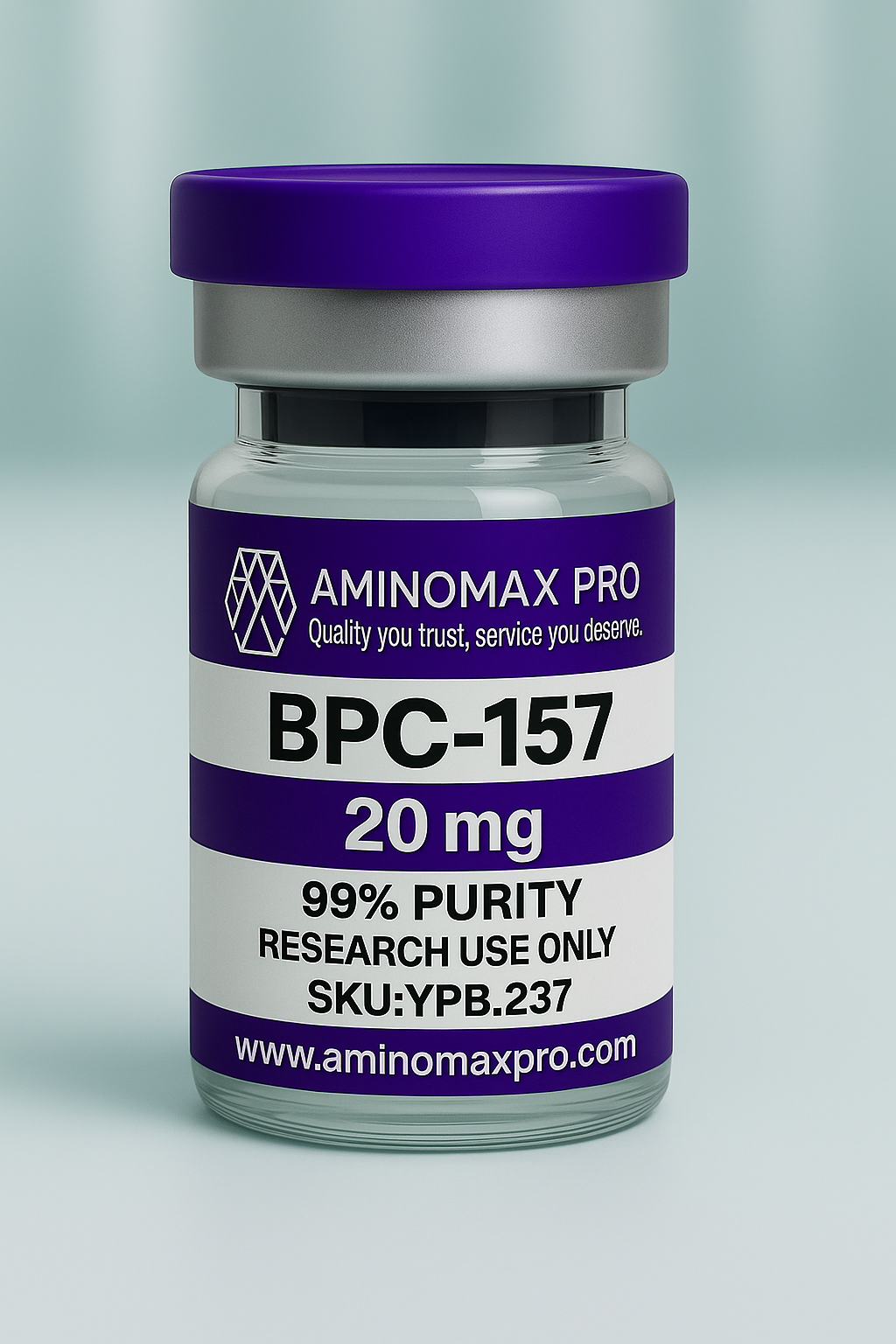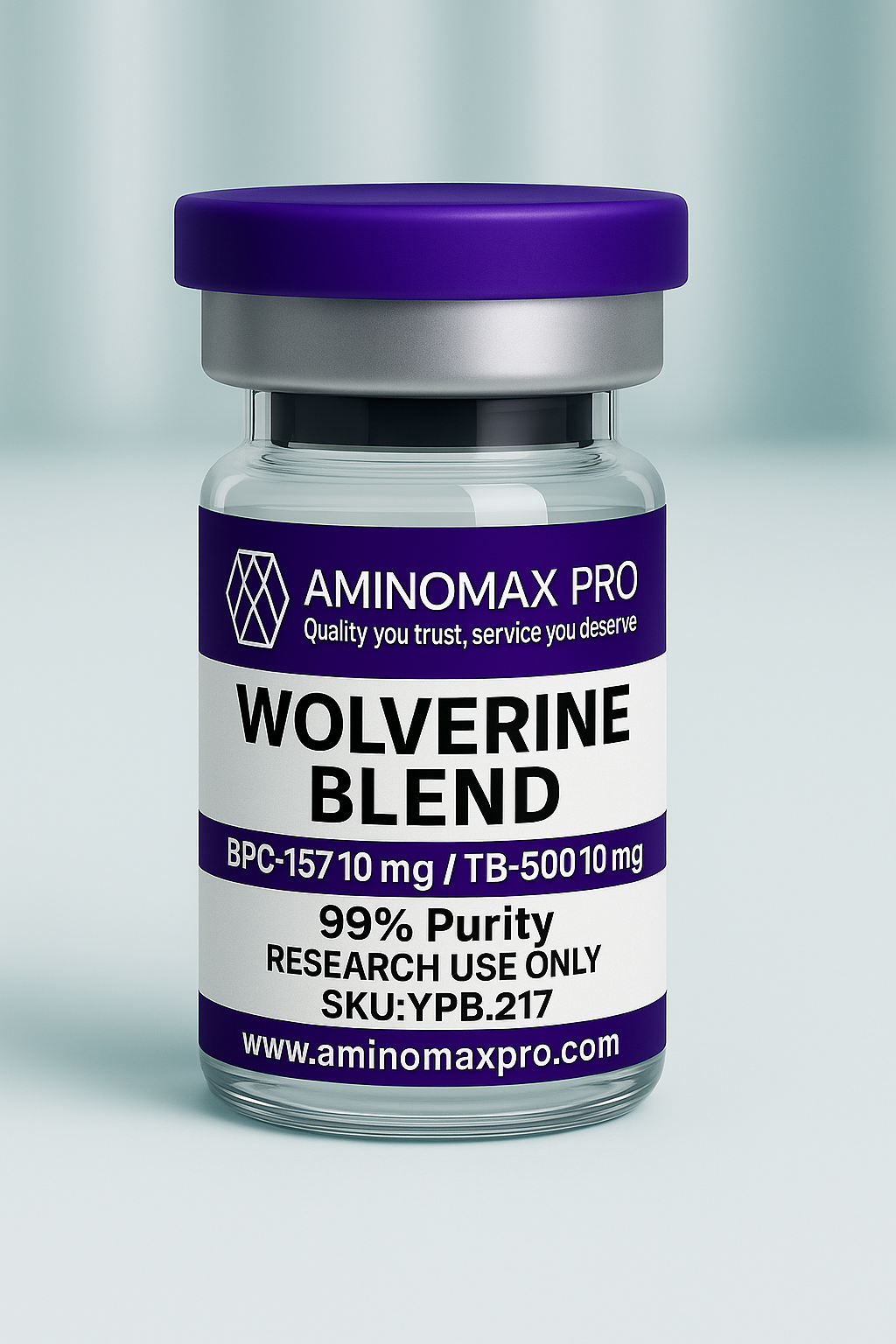Description
BPC-157 – Advanced Biochemical Mechanism & Pathway Profile
Body Protection Compound-157 (Pentadecapeptide)
BPC-157 is a 15-amino-acid synthetic peptide derived from a partial sequence of a naturally occurring gastric protein. In laboratory research, it is studied for interactions with angiogenic signaling, cytoskeletal regulation, and cell-junction stability. Unlike growth-factor peptides, BPC-157 does not require classical growth-factor receptors; instead, models suggest indirect modulation of multiple intracellular cascades.
✅ Primary Signaling Systems Studied
Research models have associated BPC-157 with the following biochemical pathways:
1. Nitric Oxide (NO) / eNOS Pathway
-
BPC-157 has been linked to modulation of endothelial nitric oxide synthase (eNOS)
-
Suggested influence on NO availability, vasodilation signaling, and cytoskeletal dynamics
Enzymes and downstream targets frequently evaluated:
-
eNOS phosphorylation
-
PI3K/Akt → eNOS activation pathway
-
cGMP signaling
2. Growth-Associated Signaling (VEGF and FAK)
Though not a direct VEGF agonist, studies examine possible upregulation of:
-
VEGF (Vascular Endothelial Growth Factor)
-
VEGFR2
-
FAK (Focal Adhesion Kinase)
These targets relate to endothelial migration, angiogenesis models, and cytoskeletal remodeling.
Gene targets studied:
-
VEGFA
-
KDR (VEGFR2)
-
ITGB3 / ITGA5 (integrin signaling)
-
Paxillin & focal adhesion proteins
3. Cytoskeletal & Cell-Junction Pathways
Laboratory work shows interest in interactions with:
-
Actin & myosin filament reorganization
-
ZO-1 (Tight-junction protein 1)
-
Occludin / Claudin family proteins
These proteins regulate epithelial and endothelial barrier integrity.
✅ MAPK / ERK & JAK/STAT Cascades
Some models report altered activity in:
-
ERK1/2 phosphorylation
-
p38 MAPK
-
JNK pathways
-
STAT3 nuclear signaling
These pathways are central to gene transcription and cellular repair mechanisms.
✅ Inflammatory & Immune-Related Targets
Research also explores modulation of inflammatory mediators at the biochemical level:
-
NF-κB pathway suppression models
-
Cytokine gene transcription (TNF-α, IL-1β, IL-6)
-
COX-2 and iNOS expression changes
These findings remain specific to controlled preclinical experiments.
✅ NO-Independent Angiogenic & Cellular Effects
Some studies describe BPC-157 influencing:
-
SRC & FAK phosphorylation
-
β-catenin signaling
-
E-cadherin and tight-junction gene maintenance
This connects peptide exposure to cytoskeleton regulation and intercellular junction stability.
Key Molecular Targets Studied
| Target Class | Representative Targets |
|---|---|
| Enzymes | eNOS, COX-2, iNOS, FAK, SRC |
| Receptors | VEGFR2, Integrins (α5β1, αvβ3) |
| Gene Expression | VEGFA, ZO-1, Occludin, Claudin, STAT3-regulated genes |
| Signaling Proteins | ERK1/2, Akt, NF-κB, β-catenin |
Research Applications (In-Vitro / Preclinical Only)
BPC-157 is used in controlled models to study:
-
Angiogenic signaling & endothelial migration
-
Nitric-oxide–related cellular pathways
-
Tight-junction protein stability
-
Cytoskeletal remodeling
-
Transcriptional shifts in inflammatory mediators
-
Growth-factor signaling crosstalk
Research-Only Classification
This compound is supplied exclusively for in-vitro laboratory research.
It is not a drug, supplement, treatment, or diagnostic agent and is not approved for human or animal use.





Reviews
There are no reviews yet.